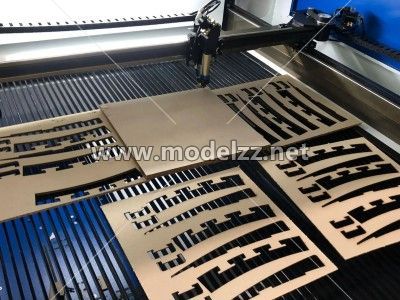Many industries depend on precision cutting techniques as part of the manufacturing process including modern art sculpture industry. Two of the most common cutting methods include laser cutting and die cutting. Die cutting uses a razor-sharp steel rule and a press to cut the material into the specified shape. In contrast, a laser cutting machine uses a powerful laser guided by a computer program to create the profile.

While both methods offer a range of benefits, the right technique for an individual application ultimately comes down to the requirements of the specific project. When comparing laser cutting and die cutting, considerations may include materials, cost, volume, and degree of precision.

Laser cutting is a fabrication process that cuts materials into extremely precise shapes using a high-powered industrial laser. As the shape emerges, an assist gas blows away any melted material, also known as kerf from the cut. Laser cutters operate by following a series of instructions derived from a computer-aided design file. Laser cutting sees broad usage across myriad industries, such as aerospace, automotive, electronics, semiconductors, medical, and city Sculpture.
Die-cutting creates shapes out of softer, more flexible materials like plastic, foam, paper, cork, and others by cutting or perforating with a press. Numerous die cutting methods exist, such as rotary, matched metal, and flatbed. Die cutting is ideal for high volumes, but not recommended for low-volume production or thicker materials. Die cutting machines can also perform multiple functions, such as kiss cutting for adhesives, embossing, laminating, and more. Benefits of die cutting include speed, efficiency, ease of cutting, quick turnarounds, little production waste and low cost.

